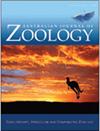澳大利亚西南部散养陆生野生动物的寄生虫
IF 1
4区 生物学
Q3 ZOOLOGY
引用次数: 0
摘要
对濒危野生动物的保护管理越来越多地依赖迁移来增加种群数量。然而,迁移会带来各种风险:从宿主的角度来看,这些风险包括寄生虫病的传播,而从更广泛的生物多样性角度来看,迁移可能会导致稀有寄生虫和其他依赖性动物的消失。尽管在迁地规划期间建议进行疾病风险分析,但有关感染受威胁物种的寄生虫或其致病性的知识往往缺乏。2014年3月至2016年6月期间,在澳大利亚西南部的两次动物迁移过程中,对汪利(Bettongia penicillata)和同类有袋动物进行了内寄生虫和外寄生虫的筛查。在此,我们总结了从笔尾负鼠(Trichosurus vulpecula hypoleucus)、刷尾负鼠(Trichosurus vulpecula hypoleucus)和朱迪奇(Dasyurus geoffroii)身上发现的寄生虫类群,包括寄主、寄生虫类群和地点的流行率数据。此外,还介绍了对其他物种(Isoodon fusciventer、Phascogale tapoatafa wambenger、Tiliqua rugosa 和 Felis catus)的随机取样结果。新的寄主-寄生虫记录包括来自 T. v. hypoleucus 的 Hepatozoon spp.、来自 T. rugosa 的 Trypanosoma noyesi、来自 D. geoffroii 的 Ixodes australiensis 和 Ixodes tasmani,以及来自 P. t. wambenger 的 I. australiensis 和 Amblyomma sp.。这项研究强调了对同域物种进行监测的重要性,尤其是在编制移地寄生虫动物群的基线数据时,并增进了我们对澳大利亚西南部陆生野生动物寄生虫感染情况的了解,该地区是全球生物多样性热点地区。本文章由计算机程序翻译,如有差异,请以英文原文为准。
The parasites of free-ranging terrestrial wildlife from Australia’s south-west
The conservation management of threatened wildlife increasingly relies upon translocations to augment populations. Translocations, however, pose various risks: from the host perspective these include the spread of parasitic disease, whereas from a broader biodiversity perspective translocation may lead to the loss of rare parasites and other dependent fauna. Although Disease Risk Analyses are recommended during translocation planning, knowledge regarding the parasites infecting threatened species or their pathogenicity is often lacking. Between March 2014 and June 2016, woylies (Bettongia penicillata) and sympatric marsupials were screened for the presence of endo- and ectoparasites, during two fauna translocations in south-western Australia. Here, we summarise the parasite taxa identified from B. penicillata, brush-tailed possums (Trichosurus vulpecula hypoleucus) and chuditch (Dasyurus geoffroii), including prevalence data for host, parasite taxon and site. Results from the opportunistic sampling of other species (Isoodon fusciventer, Phascogale tapoatafa wambenger, Tiliqua rugosa and Felis catus) are also presented. New host–parasite records including Hepatozoon spp. from T. v. hypoleucus, Trypanosoma noyesi from T. rugosa, Ixodes australiensis and Ixodes tasmani from D. geoffroii, and I. australiensis and Amblyomma sp. from a P. t. wambenger were identified. This study highlights the importance of monitoring sympatric species, particularly when compiling baseline data of parasite fauna present within translocation sites and enhances our knowledge of parasites infecting terrestrial wildlife within Australia’s south-west, a Global Biodiversity Hotspot.
求助全文
通过发布文献求助,成功后即可免费获取论文全文。
去求助
来源期刊
CiteScore
2.40
自引率
0.00%
发文量
12
审稿时长
>12 weeks
期刊介绍:
Australian Journal of Zoology is an international journal publishing contributions on evolutionary, molecular and comparative zoology. The journal focuses on Australasian fauna but also includes high-quality research from any region that has broader practical or theoretical relevance or that demonstrates a conceptual advance to any aspect of zoology. Subject areas include, but are not limited to: anatomy, physiology, molecular biology, genetics, reproductive biology, developmental biology, parasitology, morphology, behaviour, ecology, zoogeography, systematics and evolution.
Australian Journal of Zoology is a valuable resource for professional zoologists, research scientists, resource managers, environmental consultants, students and amateurs interested in any aspect of the scientific study of animals.
Australian Journal of Zoology is published with the endorsement of the Commonwealth Scientific and Industrial Research Organisation (CSIRO) and the Australian Academy of Science.

 求助内容:
求助内容: 应助结果提醒方式:
应助结果提醒方式:


